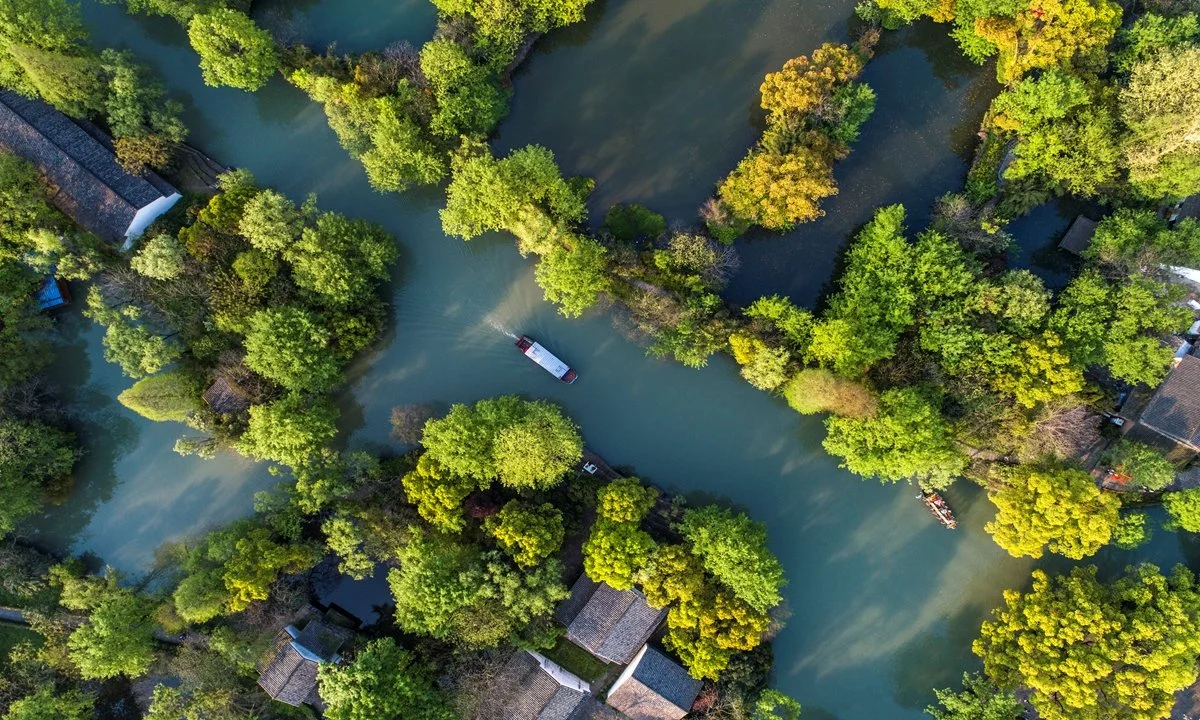World Wetlands Day: Sustaining Life, Preserving Ecosystems
An aerial photo shows the scenery of the Xixi National Wetland Park in Hangzhou, East China's Zhejiang Province. ©VCG
Every year on February 2nd, nations globally unite to commemorate World Wetlands Day, designated as a United Nations International Day since 2022. This observance serves as a platform to foster awareness, appreciation, and action for wetlands—a vital and often overlooked component of our planet's ecosystems.
Initially celebrated in 1997 by Parties to the Convention on Wetlands, it coincides with the anniversary of the adoption of the Convention on Wetlands in 1971. Today, nearly 90% of UN member states, spanning all regions, have become "Contracting Parties" to this international treaty.
What are Wetlands?
Wetlands are biodiverse and essential ecosystems, a major, planet-wide habitat that makes life on Earth possible. They are ecosystems where water is the primary factor controlling the environment and plant and animal life. Currently, they cover about 6% of the Earth’s land surface and may be saltwater or freshwater, inland or coastal, natural or human-made, permanent or temporary, static or flowing.
Why are they of great importance?
Understanding and appreciating the multifaceted roles of wetlands is crucial for fostering conservation efforts. Although they cover only around 6% of the Earth's land surface, approximately 40% of all plant and animal species live or breed in wetlands. Often referred to as the Earth's kidneys, wetlands also play a vital role in water regulation. They act as natural filters, purifying water by trapping pollutants and sediments. This process helps ensure the availability of clean water for various uses.
Wetlands contribute significantly to climate change mitigation. They sequester large amounts of carbon dioxide, helping to reduce greenhouse gas levels in the atmosphere. Coastal wetlands, such as mangroves and tidal flats, act as natural buffers against storm surges and coastal erosion. They protect coastal communities and infrastructure from the impacts of extreme weather events.
Many wetlands are essential for agriculture and fisheries. They serve as breeding grounds for numerous fish species and support the growth of aquatic plants, contributing to global food security and supporting livelihoods. About 1 in 8 people make their livelihoods from wetlands in ways that also deliver food, water supplies, transport, and leisure. Wetlands also contribute to various economic activities, including tourism, agriculture, and fisheries. Many people depend on wetlands for their livelihoods, emphasizing their economic importance. Wetlands support 266 million jobs in tourism and travel – that’s 8.9% of the world’s total employment.
Urgency for Conservation
Despite their vital importance, wetlands face imminent threats. These ecosystems are disappearing three times faster than forests, with over 80% lost since the 1700s. The ongoing trend of wetland loss, exacerbated by human activities and climate change, jeopardizes species within these habitats. Agriculture stands out as a primary driver of wetland loss and degradation.
Since joining the Ramsar Convention in 1992, China has taken active responses to global challenges such as wetland area reduction and degradation of ecological functions. Now, there are in total of 82 wetlands in China among the Ramsar Sites (List of Wetlands of International Importance), ranking No.4 in the world and covering 7.65 million hectares under Ramsar protection. The Sites lie in 13 of China’s provinces, including Shanghai's Chongming Dongtan Nature Reserve. Now with a total wetland area of about 56.35 million hectares, China is one of the countries that has the most complete types of wetlands.





